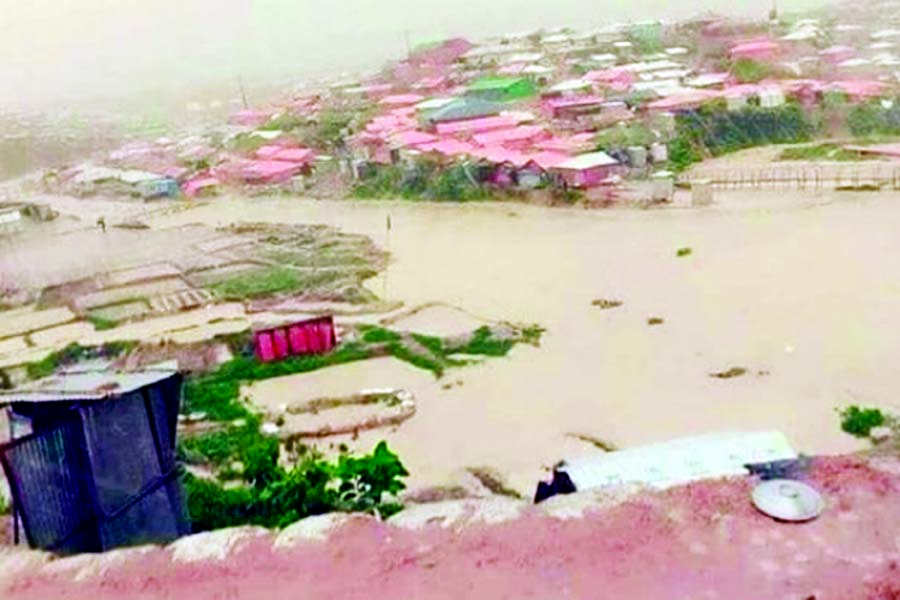
Heavy monsoon rains that began on Saturday have caused severe structural damage to Cox’s Bazar Rohingya refugee camps, said the International Organization for Migration (IOM) on Monday.
Over 31,000 of the camps’ one million refugees, who fled Myanmar, are still living in areas considered to be at high risk of deadly flooding and landslides. Within 24 hours of the rains starting, humanitarian agencies reported some 59 incidents, including landslides, waterlogging, extreme wind and lightning strikes.
The incidents are being mapped and shared on an interagency communal incident overview platform. Over the same period, aid agencies reported that over 9,000 people were affected and that this number will increase as the rains continue. IOM, the UN migration agency, said it is working against the clock to secure infrastructure, including road access and drainage, and to improve preparedness. Working with partners, the IOM said, it is
ensuring that refugees continue to receive lifesaving assistance, including water, sanitation and hygiene, health, protection and shelter support during the monsoon. “The risks remain huge, given the vast size and nature of the congested, makeshift camps. The hilly terrain is now largely bare of vegetation and the rains have made the soil extremely unstable, increasing the risk of large scale flooding and landslides,” the IOM said. The IOM and its partners have responded by relocating thousands of vulnerable households to safer ground ahead of the rains.
Since January, 5,196 households (about 25,000 individuals) vulnerable to landslides and floods or in areas of communal infrastructure construction have been moved to safer areas. Before the end of June, the IOM and its partners plan to move another 1,602 vulnerable households (7,248 individuals) to safer ground.
In Unchiprang, a camp in Teknaf sub-district, IOM moved 787 households ahead of the heavy rains. But another 65 households remain at risk of landslides and floods. “Yesterday, 19 households were identified as at risk of landslides and moved to learning centers and child friendly spaces of the camp. They’ll be relocated to a new land once the rain stops. Relocation of these families is not possible as their shelters can’t be properly constructed amid continuous heavy rains,” said IOM site manager Mohammad Manun.
“The situation in the camps is growing more desperate with every drop of rain that falls,” said Manuel Pereira, IOM’s Emergency Coordinator in Cox’s Bazar. “You have close to one million people living on hilly, muddy terrain with no trees or shrubs left to hold the ground in place. People and their makeshift shelters are being washed away in the rains. We’re racing to save lives, but we urgently need more funding to maintain and expand key humanitarian support during these rains. Without this, our operations, which are currently only 22 percent funded, will run out of money by the end of this month,” he added. The IOM, WFP and UNHCR have also strategically positioned heavy machinery in key camp locations for disaster response operations in a joint project called the Site Maintenance Engineering Project (SMEP). Teams are also continuously working to increase available land for relocations. The IOM has already prepared 186.8 acres of new land to relocate at least 7,000 people. The existing refugee shelters have also been upgraded to better withstand heavy rain and high winds, and refugees have been advised on measures they can take to reduce their vulnerability to any upcoming disaster.

